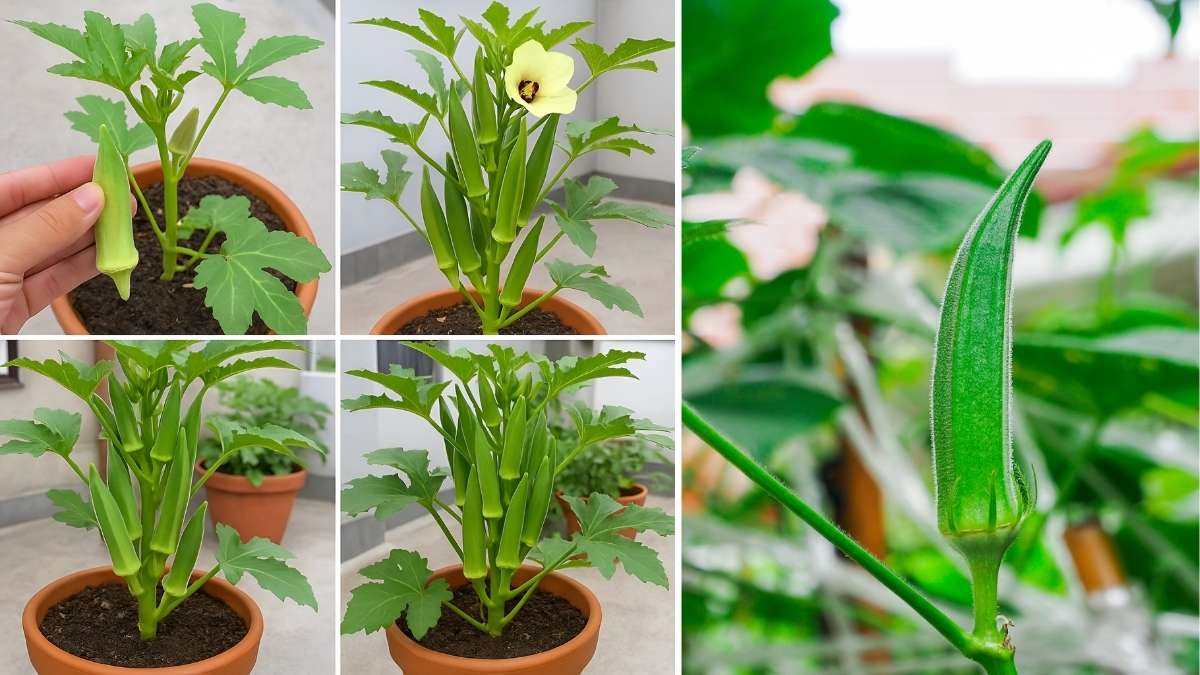Growing your own fresh vegetables is a wonderful way to bring life to a small outdoor space. Even if you don’t have a yard, you can grow okra on a balcony. Okra is a warm-weather crop that thrives in sunlight and needs relatively little space. This guide will lead you through every step, from choosing containers to harvesting.
Why Choose Okra for Your Balcony?
Okra is a smart pick for small-space growers. It likes warm conditions and bright light, two things your balcony can offer. Its plants grow upright rather than spreading wildly, so they won’t take up too much room. And okra pods are nutritious, tasty, and a fun addition to your cooking.
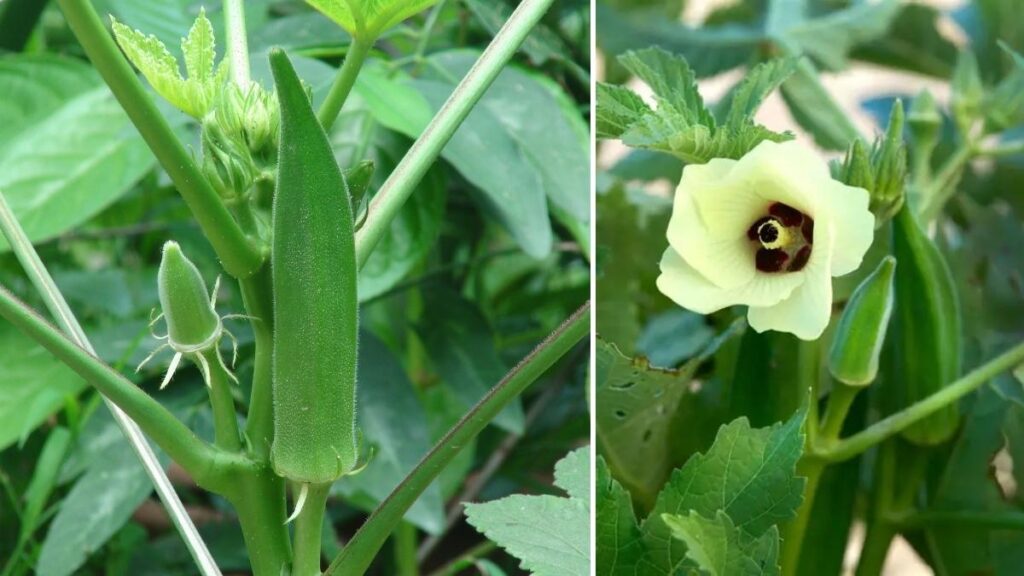
Here are a few benefits:
- It needs minimal maintenance once established
- It tolerates heat well
- You get fresh pods straight from your own balcony
- It can be grown in containers
Choosing the Right Container
Your choice of container can make or break your balcony garden. Here’s what to keep in mind:
- Use a pot that is at least 12 to 14 inches in diameter
- Make sure it has drainage holes at the bottom
- Go for lightweight materials (plastic, fiber, or fabric pots) if weight is a concern
- Consider using a sturdy bucket or large planter box
A container that holds about 5 to 7 gallons (19 to 26 liters) is ideal for one okra plant. If you have more space, two plants can share a larger container, but avoid crowding.
Picking the Right Soil and Mix
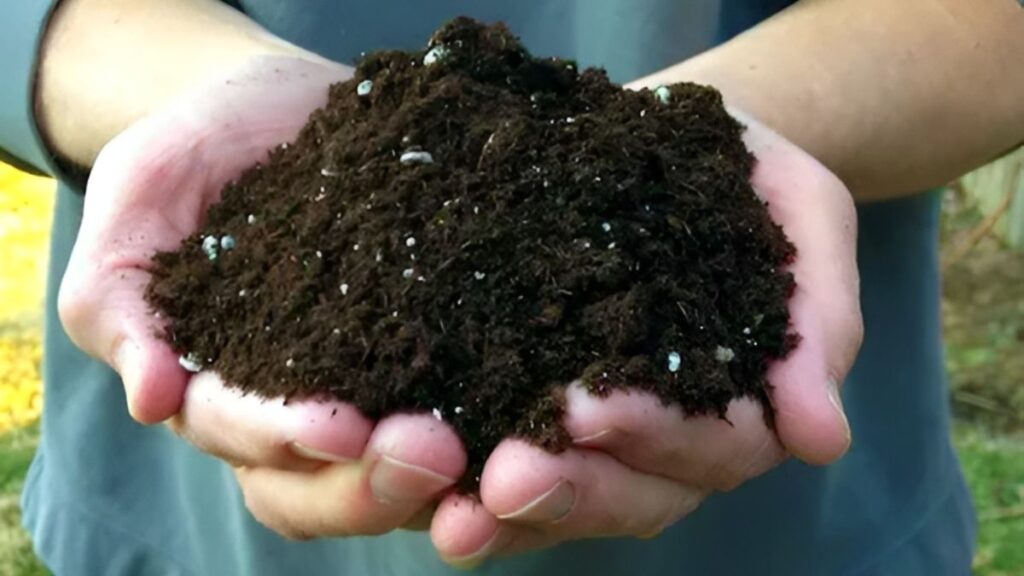
The soil you use must give good drainage and nutrition. A quality mix helps roots breathe and keeps water from pooling.
For your soil mix:
- Use a blend of potting soil with some compost
- Add perlite or coarse sand to improve drainage
- Ensure the soil is loose and light
- Avoid heavy garden earth or clay
Fill the container leaving about an inch (2.5 cm) from the rim so water won’t overflow when you water.
Choosing Okra Variety and Seeds
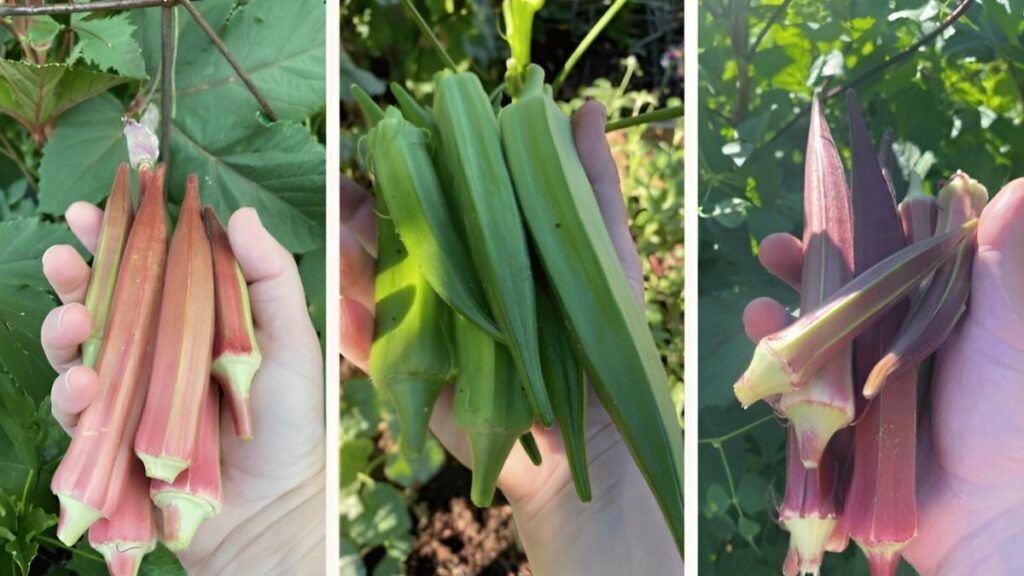
Pick a variety suitable for container growing. Some types stay more compact or have upright growth. Check seed packets for “compact” or “dwarf” labels.
When buying seeds:
- Choose fresh seeds (less than two years old)
- Look for disease-resistant varieties if available
- Start with a few extra seeds in case some don’t germinate
Planting the Seeds or Seedlings
You can either start from seeds or use small seedlings (young plants). Starting from seeds is simple and cost-effective.
To plant from seeds:
- Soak seeds in water overnight to encourage germination
- Plant two seeds per container at about 1 inch (2.5 cm) deep
- Cover them with soil and water gently
- Keep the soil moist but not soggy until sprouts appear
If both seeds sprout, remove the weaker plant so you have one strong okra plant per pot.
If you use seedlings from a nursery:
- Handle gently by their leaves, not stems
- Plant them at the same depth they were in their original pot
- Firm the soil around the roots gently
Positioning and Sunlight Requirements
Okra thrives on sunlight. On a balcony, you need to place the container where it will get enough direct light.
Sunlight needs:
- At least 6 hours of direct sun per day
- Afternoon sun is best for strong growth
- If your balcony is shady, supplement with a grow light
- Rotate the pot occasionally so all sides get light
Watering and Fertilizing
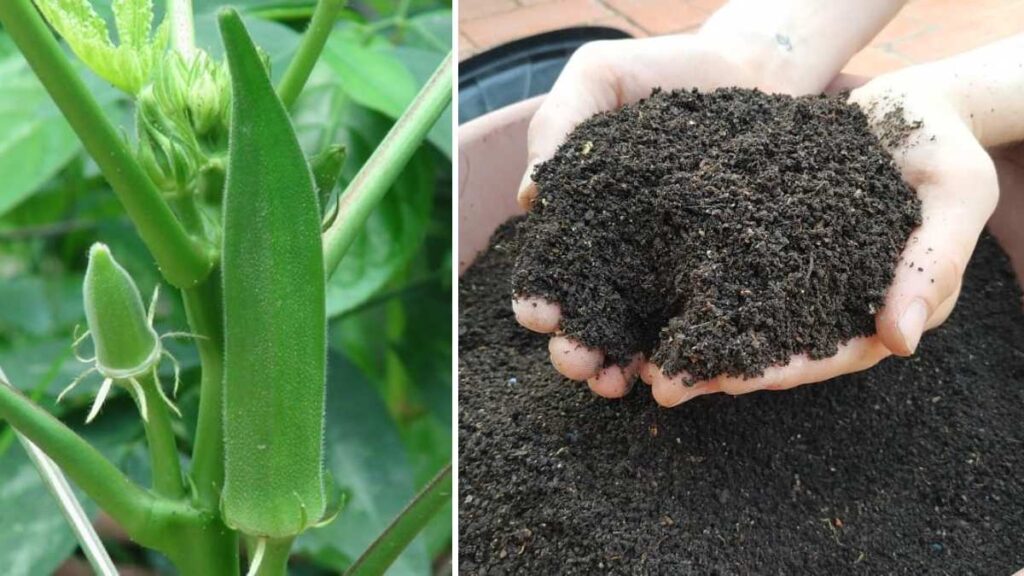
Getting water and food right is essential in containers.
Watering tips:
- Water deeply but less often let the top soil dry slightly
- Use your finger to check moisture a few inches deep
- In very hot weather, water more often
- Use a saucer under the pot to catch drips, but empty excess water
Fertilizing:
- Use a balanced liquid fertilizer every two weeks after plants are established
- Or use slow-release fertilizer at planting time
- Supplement with compost tea if you can
Supporting the Plants
Although okra is upright, tall plants might need support in a windy balcony. Use stakes or a stake-and-twine system.
Support tips:
- Insert a bamboo or wooden stake near the plant
- Tie the main stem loosely to the stake using twine
- Add support as the plant grows
Pests and Diseases to Watch
Even balcony gardens can face pests or disease. Vigilance helps.
Common issues:
- Aphids or whiteflies: wipe leaves or spray mild soap solution
- Spider mites: mist leaves or spray with water
- Fungal problems (damping off): avoid overwatering and ensure good airflow
- Powdery mildew: use neem oil spray
Check leaves and buds weekly to spot trouble early.
Pruning and Maintenance
Some care through the season helps keep your plant healthy.
Maintenance steps:
- Remove yellowing leaves to keep airflow
- Pinch off small unhealthy branches
- Keep surrounding area tidy
- Mulch topsoil with straw or shredded leaves to conserve moisture
Harvesting Okra Pods
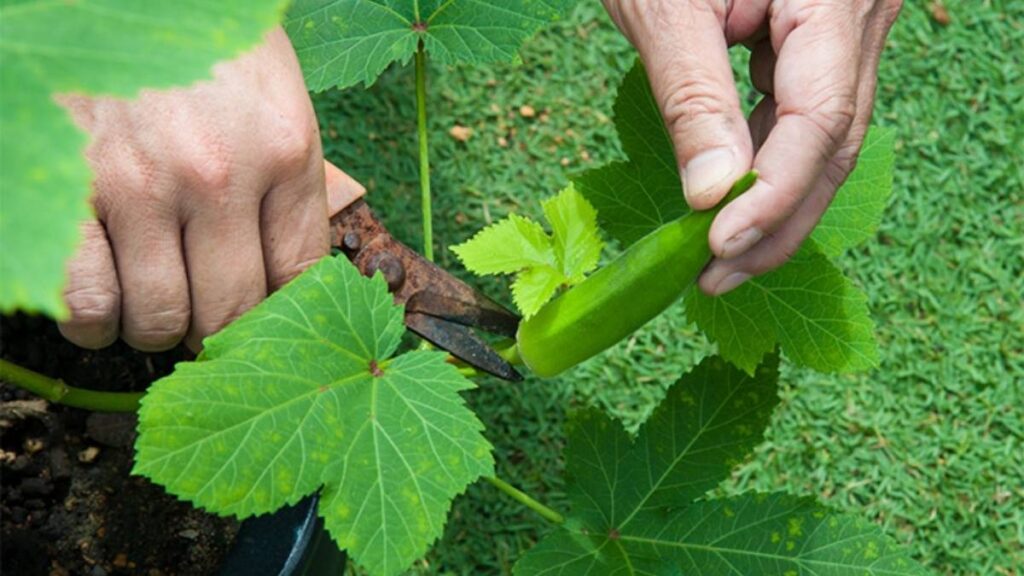
Knowing when to pick is key. Okra pods get tough quickly if left to grow too large.
Harvest guidelines:
- Pick pods when they are 2 to 3 inches (5 to 7.5 cm) long
- Use a small knife or scissors to cut them off
- Check daily pods grow fast
- Don’t leave old pods on the plant
- Regular harvesting encourages more production
What to Do After Harvest Season
When your growing season ends (with cooler weather), you can prepare your balcony for the next round.
Post-season steps:
- Collect and compost all old plant material
- Clean and disinfect containers
- Store leftover soil in buckets or bags
- Rest the soil or refresh it with compost
You may also plan for another crop if your climate allows, or try container-friendly winter greens.
Troubleshooting Common Problems
If plants have yellow leaves: that may mean overwatering or lack of nutrients. Check drainage, adjust watering, feed more.
If only a few flowers or pods form: maybe not enough sunlight or too much nitrogen in fertilizer. Increase sun exposure, reduce nitrogen.
If pests are heavy: increase spraying with organic insecticides or handpick regularly.
If pods become tough early: harvest sooner, choose faster-maturing variety, or reduce heat stress.
Tips for Better Balcony Success
Here are extra ideas to help your balcony okra flourish:
- Use darker colored containers (they absorb and retain heat better)
- Place containers near walls that reflect warmth
- Try self‑watering pots if you can’t water daily
- Keep containers clean and remove debris
- Rotate or rest soil between seasons
- Consider companion plants (e.g. basil, marigold) for pest control
Final Thoughts
Growing okra on a balcony is entirely possible and actually fun. Even without a garden plot, you can enjoy fresh homegrown pods with relatively little effort. The key is choosing the right container, giving enough light and water, feeding wisely, watching for pests, and harvesting regularly.
If you start with just one container and learn its needs, you will gradually get more confident. Within a season, balcony‑grown okra can reward you with a steady supply of fresh, healthy produce. Enjoy your balcony garden adventure!

